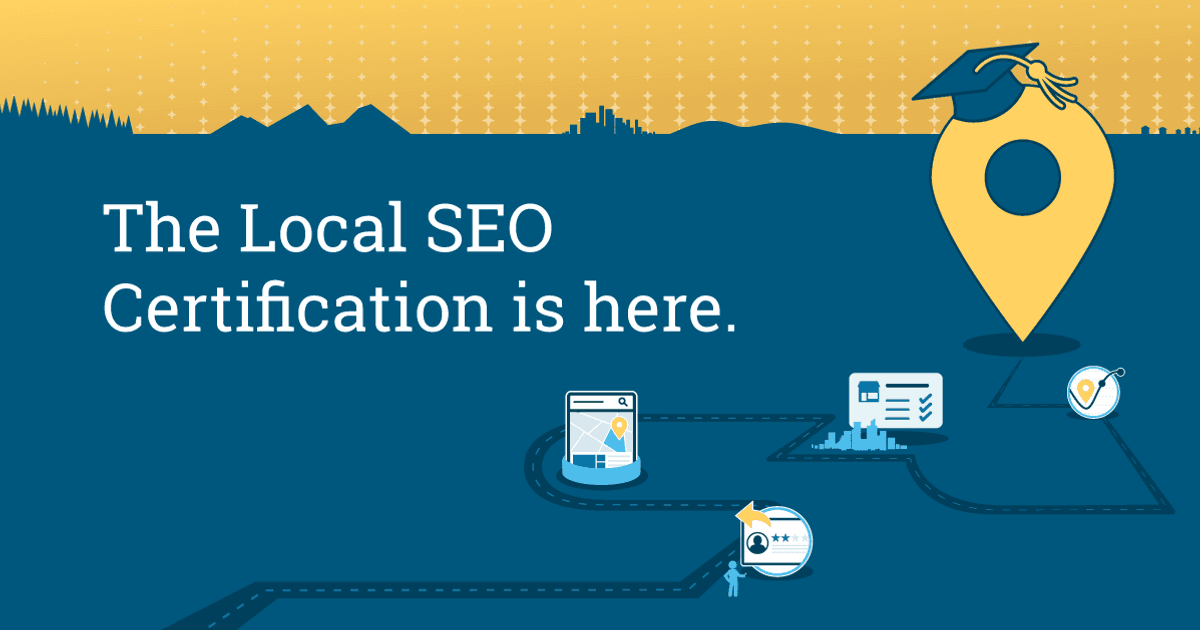MARKETING
Announcing the Local SEO Certification from Moz Academy

The author’s views are entirely his or her own (excluding the unlikely event of hypnosis) and may not always reflect the views of Moz.
43% of people tasked with marketing local businesses say there just aren’t enough resources available to teach them local SEO. Today, Moz is debuting our Local SEO Certification program to fulfill this need. With this well-organized, engaging video course, you can learn at your own pace, take an exam, and earn a certificate and LinkedIn badge as proof of your achievement.
As a contributor to the development of this new Moz Academy educational opportunity, I recommend it to:
-
Enterprises and agencies that need to solidify or increase their local SEO skills to contribute to company growth.
-
SEOs who need to advance their careers by expanding into the rapidly-growing world of local SEO.
-
Local SEOs who want confirmation that they are current in best practices, or to dispel some of the worries of all-too-common imposter syndrome.
-
Local business owners who know their companies can’t reach full potential without great local search marketing.
The Moz Academy Local SEO Certification covers all of the following material in an approachable, enjoyable five-part video series, led and presented by Moz’s Senior Learning and Development Specialist, Meghan Pahinui.
What will you learn?
Part 1 — Map Your Route: Understand the Fundamentals
No matter where you are in your SEO journey, it’s essential to understand how the foundational elements relate to local SEO. You’ll learn the cornerstones of local SEO, and how you should prepare when jumping into any local SEO strategy.
Part 2 — Look Both Ways: Understand Your Competition & Where You Stand
In Part 2, you’ll learn all about the concept of local search marketing, which segues into a method for creating a list of target keywords for your business. You’ll perform a preliminary location data audit for your business, and compare it to your competitors to get a better idea of how you stack up.
Part 3 — Start Your Journey: Establish a Business in the Local Space
There are a variety of citations that you or a customer may encounter for your business, and it’s important to know what they are, the differences between them, and how you can leverage them for your business! You’ll learn about the local search ecosystem, and how information moves throughout this complex environment. We’ll also discuss what a Google Business Profile is, why it’s important, and how it impacts visibility, then walk you through the setup.
Part 4 — Ask for Directions: Reputation Management & Community Engagement
Your engagement with the community and your customer base, as well as their engagement with you, starts with creating a strategy for reputation management. You’ll learn all about what reputation management is, its impact on your business, and a solid plan for building a strong and sustainable online presence. We’ll talk about customer reviews, customer service, and social media, as well as how you can build localized content and links.
Part 5 — On the Road Again: Ongoing Maintenance & How to Measure Success
You’ll start Part 5 with learning all about the ongoing tasks you can expect to perform to keep your local SEO strategy in tip-top shape. We’ll discuss a few of the bumps you may hit with Google Business Profile, and dive into the most common propagation issues you may encounter, and how to manage them effectively and efficiently. Finally, you’ll learn how to measure success, and implement changes to your business’s local SEO plan!
By the end of this course, you will be well-prepared to begin analyzing local businesses and marketing them online. Once you’ve completed your 5 hours and 45 minutes of training, you will have the opportunity to take an exam to earn your certificate and LinkedIn badge to display your accomplishment to professional peers, employers, and potential clients.
Why take this course?
If you’re wondering how learning about local SEO will benefit you, consider that over the past two decades, Google has increasingly hitched its star to the local component of its offerings. Their local business listing index is unparalleled, their review corpus has surpassed Yelp’s, and they are steadily weaving local businesses into their powerful visual and shopping interfaces.
Meanwhile, local businesses dominate commerce in terms of sheer numbers: 80% of discretionary spending occurs within 20 miles of home, and the public is now deeply habituated to using the Internet to facilitate this spending. Instead of missing out on all of this activity, you will gain a passkey to it with this modest investment in education, focused on what has arguably become the area of SEO with both the greatest growth potential and the strongest staying power. It’s a safe and smart bet.
Education is always good, in itself, but here, you’ll have the chance to take bright, lively, enjoyable lessons that you can immediately begin applying to your daily work, building out the skill set you bring to employers, teams, and clients because you’ve developed your confidence in local SEO. Purchase your course today and enjoy real progress along your personal local search journey!



















You must be logged in to post a comment Login